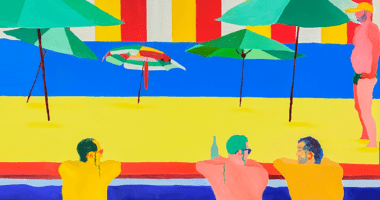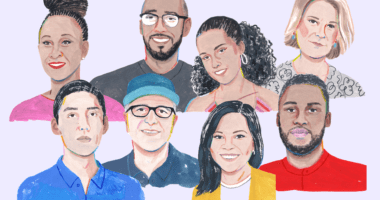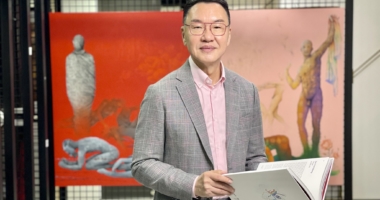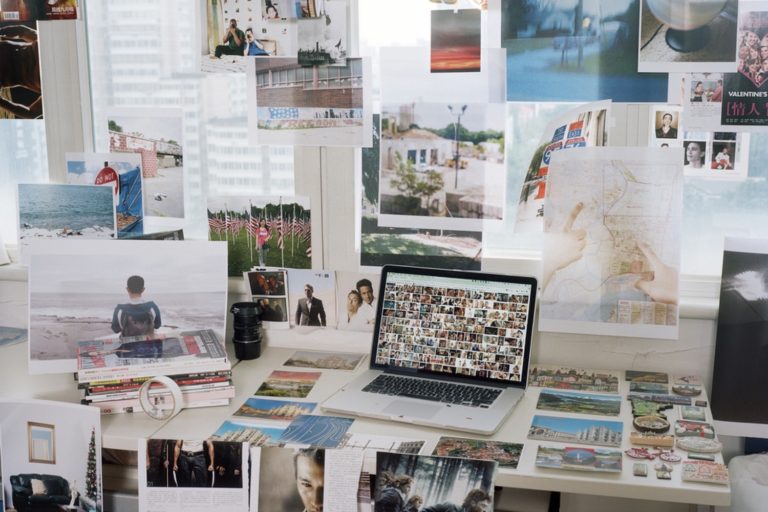
Guanyu Xu, My Desktop, 2018. Courtesy of Gaotai Gallery.
Summer 2020 was a tricky time to start a gallery, but Canopy Collections did it anyway, just after the first lockdown in the U.K. “We were very much aware that COVID wasn’t going to go away instantly, so we decided to invest online straight away,” said co-founder Louise Chignac. “From day one, online was for us a tool to exist during the pandemic.” Thanks to the connections the gallery was able to make through sales on its website—which includes an e-commerce platform—over this time period, Canopy Collections’ online network turned into an offline one, too, as restrictions were lifted: “They became concrete relationships,” said Chignac.
Online tools, from marketplaces to price databases to social media, have undoubtedly shifted the sales environment for galleries and collectors alike. According to The Art Basel and UBS Global Art Market Report, online art sales—which amounted to an estimated $13.3 billion, up 7% since 2020—accounted for 20% of the entire market last year. However, the art world is built on relationships, fueled by in-person interactions, that can stretch over years or even decades. How have these tools changed the way that gallerists and collectors build lasting, fruitful relationships?
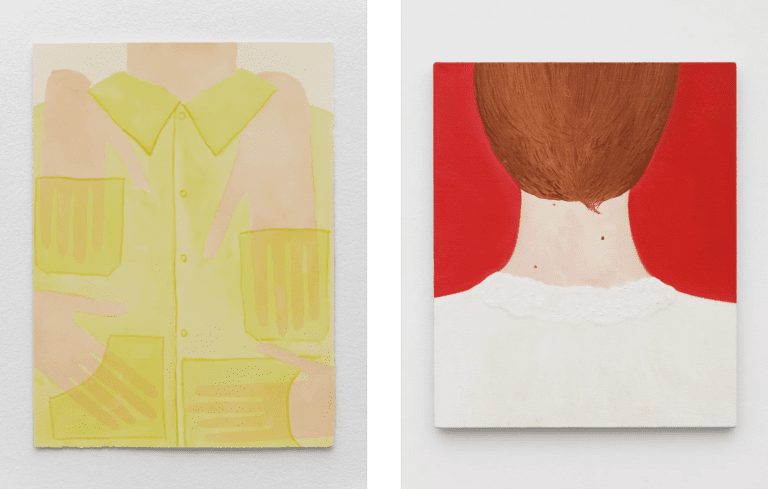
Ellie MacGarry, Hand Inside (Four Hands), 2022. Ellie MacGarry, Moles, 2018. Courtesy of Canopy Collections.
The Canopy Collections team uses Instagram and their website to expand on the gallery’s values, as well as their commitment to the art for sale. Through sharing said content online, Chignac and her colleagues have kept up conversations with collectors they may never have connected with otherwise. For emerging galleries, this is particularly important, Chignac said: “For younger businesses, I think it does matter to be able to create a community.”
For the gallery’s website, which Chignac described as “sort of in between e-commerce and a very serious gallery,” she noted the importance of curating a user experience that encourages engagement: “We have a system in place that feels more welcoming, I think, and less intimidating to new collectors,” she said. Several structural elements make these conversations easier than they might be with a stranger walking into the gallery off the street: anonymity (buyers can remain nameless until it is time to purchase) and price transparency (all prices are available up-front).
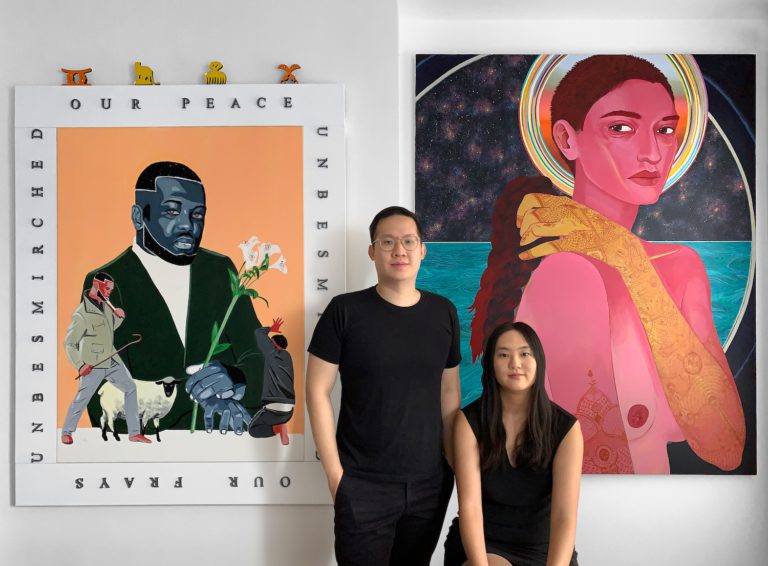
Portrait of Steven Abraham and Lisa Young with Conrad Egyir, Agape. Allegory of Love, 2019; and Nadia Waheed, Moksha, 2019. Courtesy of the artists and Young-Abraham Collection.
For collectors, too, online platforms can be a place to build meaningful and long-lasting relationships. “It’s redefined how we make connections with people,” said Steven Abraham, who collects with his wife, Lisa Young. Since the couple didn’t grow up around art collecting, they found that online platforms like Artsy and Instagram were a good way to get a sense of the context they were entering when they began to buy art. “It just makes everything very accessible and you can strike up a conversation pretty quickly,” Abraham said. “There’s definitely an increased sense of comfort because you can be armed with more knowledge, in an environment that isn’t so intimidating,” Young added.
Online tools also allow collectors to be involved in galleries’ programs in a more low-key way, indicating interest and support for galleries’ programs through the casual, chatty language of likes and DMs. This can also smooth the interaction when an in-person meeting actually happens: “It becomes a lot easier when you’ve had some of those conversations beforehand and are able to show consistent support, even if it’s not physically in the gallery,” said Young.
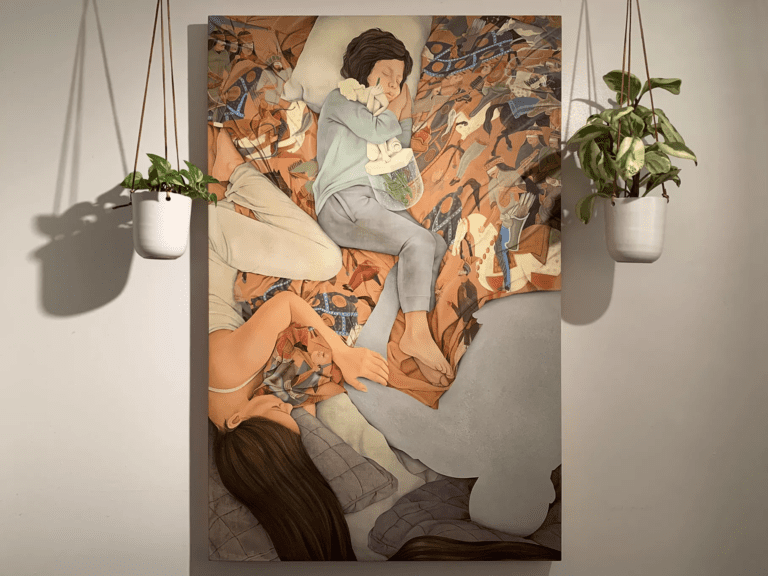
Arghavan Khosravi, installation view of A Family Portrait (Childhood Memories), 2019. Courtesy of the artist and Young-Abraham Collection.
For Abraham and Young, whose collection is specifically focused on BIPOC artists, connecting with galleries through their shared passion is a way to help foster a meaningful relationship in the future. Plus, watching how galleries conduct themselves through online channels can give collectors a good sense of how they function in real life, too. “I still expect some kind of professionalism to it,” said Abraham. “I think that the quality of a gallery is very much reflected through the [digital] interaction.”
Indeed, casual and personal messaging platforms are a key tool for gallerists to maintain relationships. “All the best collectors, the ones who return and buy the most, it’s all about messaging with them and sharing things: ‘Have you seen this?’” said Andrea Giordano, director at Eve Leibe Gallery. “Some of our best collectors, we’ve only met online,” he said.
When it comes to ensuring that the relationships last, it isn’t only about communication, but also making the encounter a successful one from start to finish, Giordano explained: “So, the way [collectors] receive the work, organizing the shipping, checking that there’s no issues for them for customs—otherwise they really get frustrated.”
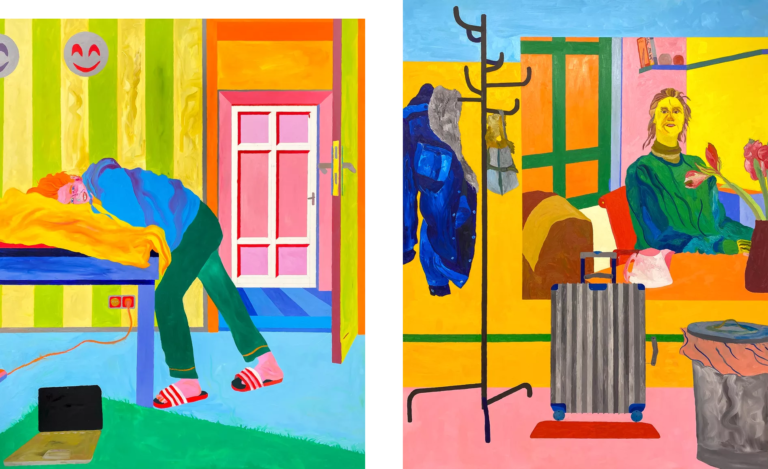
Navot Miller, Giulia in her room with Alex’s artworks, 2021. Navot Miller, Alice in Tino’s office, 2021. Courtesy of Eve Leibe Gallery
Management of the entire sale is particularly important when so many of these encounters are happening internationally. “We have clients in San Francisco, New York, Japan, Shanghai, Macau….” said Lois Fernandez, director of Jaloe Art Gallery, which is based in Alicante, Spain. Having only set up online sales with Artsy as a response to the pandemic, the marketplace has increased the gallery’s reach to a global audience.
To maintain these international connections, Fernandez tries to maintain a very close relationship with her clients, which includes checking in after the piece has shipped. This attitude, she said, has led customers to say that they chose to purchase through her gallery instead of others. “We try to reply as soon as we receive an email,” she said. “We’re trying to give extra services that others don’t.” Online customers, she said, should feel just as taken care of as those who come into the gallery. “The only difference is that you can see the person!” she said.
This article was written by Josie Thaddeus-Johns.

